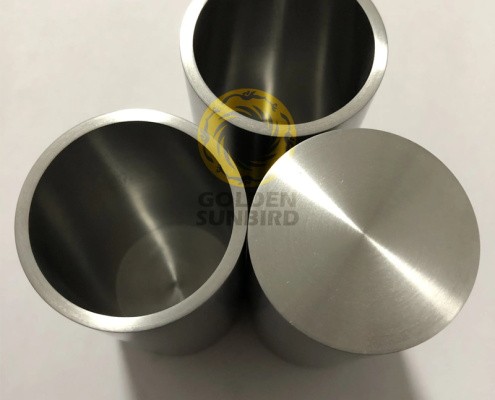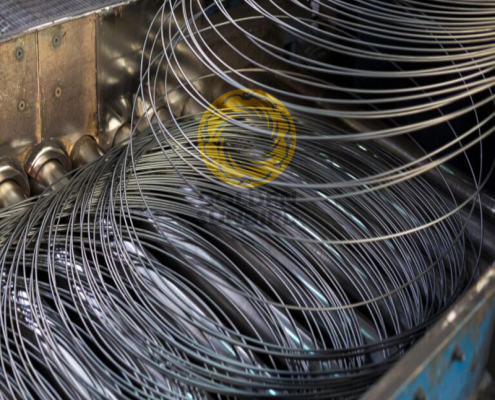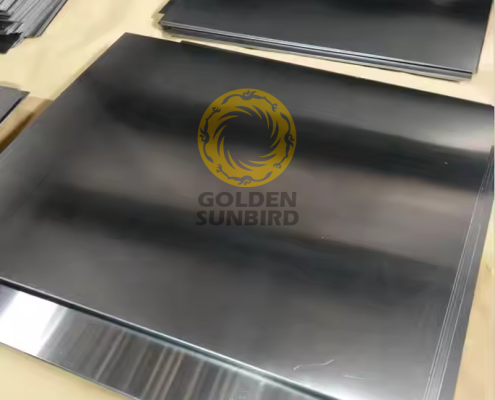Golden Sunbird Metals is your trusted supplier of molybdenum and molybdenum alloys from China. We offer high-quality molybdenum alloy products at wholesale prices designed to meet industries’ stringent requirements worldwide. Our molybdenum alloy products are used in various industries, including electronics, aerospace, nuclear energy, automotive, medical devices, industrial processes, and chemicals due to their high strength at elevated temperatures, good thermal and electrical conductivity, and corrosion resistance. If you want to purchase molybdenum alloy products in bulk or customized molybdenum alloy products, please email us at [email protected].
FAQs
What Are Molybdenum Alloys?
Molybdenum alloys are materials that combine molybdenum with other elements to enhance certain properties, such as strength, temperature resistance, and corrosion resistance. These alloys are engineered to perform in extreme environments where pure molybdenum would falter due to its limitations. For instance, adding titanium and zirconium increases the alloy’s strength and resistance to high temperatures, making it suitable for aerospace, nuclear energy, and electronics industries.
- Molybdenum alloys include additional elements for improved performance.
- They are designed for use in extreme conditions.
- Key industries include aerospace, nuclear energy, and electronics.
Why Use Molybdenum Alloys Over Pure Molybdenum?
Choosing molybdenum alloys over pure molybdenum hinges on the necessity for enhanced material properties that pure molybdenum cannot offer. Alloys are specifically tailored to withstand higher temperatures, exhibit greater strength, and resist corrosion more effectively than pure molybdenum. For applications like turbine blades in jet engines or components in nuclear reactors, these enhanced properties are not just beneficial; they are critical for safety and performance.
- Alloys provide superior temperature resistance, strength, and corrosion resistance.
- Tailored for critical applications requiring enhanced material properties.
- Essential for industries where safety and performance are paramount.
What Are the Most Common Types of Molybdenum Alloys?
The most common types of molybdenum alloys include Molybdenum-TZM (Titanium-Zirconium-Molybdenum), Molybdenum-Lanthanum (Mo-La), and Molybdenum-Tungsten (Mo-W) alloys. TZM is renowned for its high strength and resistance to thermal creep deformation, making it ideal for high-temperature applications. Mo-La alloys are distinguished by their enhanced ductility and resistance to oxidation at elevated temperatures, while Mo-W alloys offer superior resistance to corrosion, especially in reducing environments.
- Molybdenum-TZM is known for high strength and thermal creep resistance.
- Molybdenum-Lanthanum offers enhanced ductility and oxidation resistance.
- Molybdenum-Tungsten excels in corrosion resistance.
How Are Molybdenum Alloys Manufactured?
The manufacturing of molybdenum alloys typically involves powder metallurgy techniques. This process starts with the mixing of molybdenum powder with other elemental powders, according to the desired alloy composition. The mixture is then compressed into a compact shape and sintered at high temperatures to induce fusion between the particles without melting them completely. The result is a solid material that combines the properties of its constituent elements. Subsequent processing steps, such as forging and rolling, can further refine the alloy’s microstructure and improve its mechanical properties.
- Utilizes powder metallurgy techniques for alloy production.
- Involves mixing, compressing, and sintering elemental powders.
- Further processing refines the alloy’s properties.
What Are the Key Applications of Molybdenum Alloys?
Molybdenum alloys find their applications in a variety of demanding industrial sectors. In the aerospace industry, they are used in the manufacture of aircraft parts and rocket nozzles due to their high-temperature strength and resistance to thermal creep. In the energy sector, nuclear reactors utilize these alloys for their radiation shields and fuel rod components, benefiting from the material’s high melting point and good thermal conductivity. Additionally, the electronics industry employs molybdenum alloys in the production of semiconductor device substrates and contacts, where their electrical conductivity and thermal expansion properties are crucial.
- Aerospace industry for high-temperature components.
- Nuclear reactors for radiation shielding and fuel rods.
- Electronics for semiconductor substrates and contacts.
How Do Molybdenum Alloys Compare to Other High-Temperature Alloys?
Molybdenum alloys stand out among high-temperature alloys due to their exceptional strength at elevated temperatures, excellent thermal conductivity, and low thermal expansion coefficient. Compared to nickel-based superalloys, molybdenum alloys can operate at higher temperatures and exhibit superior resistance to thermal creep deformation. This makes them particularly suited for applications in environments where thermal efficiency and dimensional stability under heat are crucial. However, it’s worth noting that in extremely corrosive environments, certain nickel-based alloys might perform better due to their enhanced corrosion resistance.
- Higher operational temperatures compared to nickel-based superalloys.
- Superior thermal creep resistance.
- Excellent thermal conductivity and low thermal expansion.
Can Molybdenum Alloys Be Welded?
Welding molybdenum alloys requires specialized techniques due to their high melting points and unique physical properties. Techniques such as electron beam welding, gas tungsten arc welding, and plasma arc welding are commonly employed. These methods allow for precise control over the welding environment, minimizing exposure to oxygen and other contaminants that could adversely affect the weld quality. Pre-weld and post-weld heat treatments are often necessary to prevent cracking and to ensure the structural integrity of the weld. Thus, while welding molybdenum alloys is feasible, it demands technical expertise and careful preparation.
- Specialized welding techniques are necessary.
- Electron beam, gas tungsten arc, and plasma arc welding are commonly used.
- Pre-weld and post-weld heat treatments help ensure weld quality.
Are Molybdenum Alloys Environmentally Friendly?





